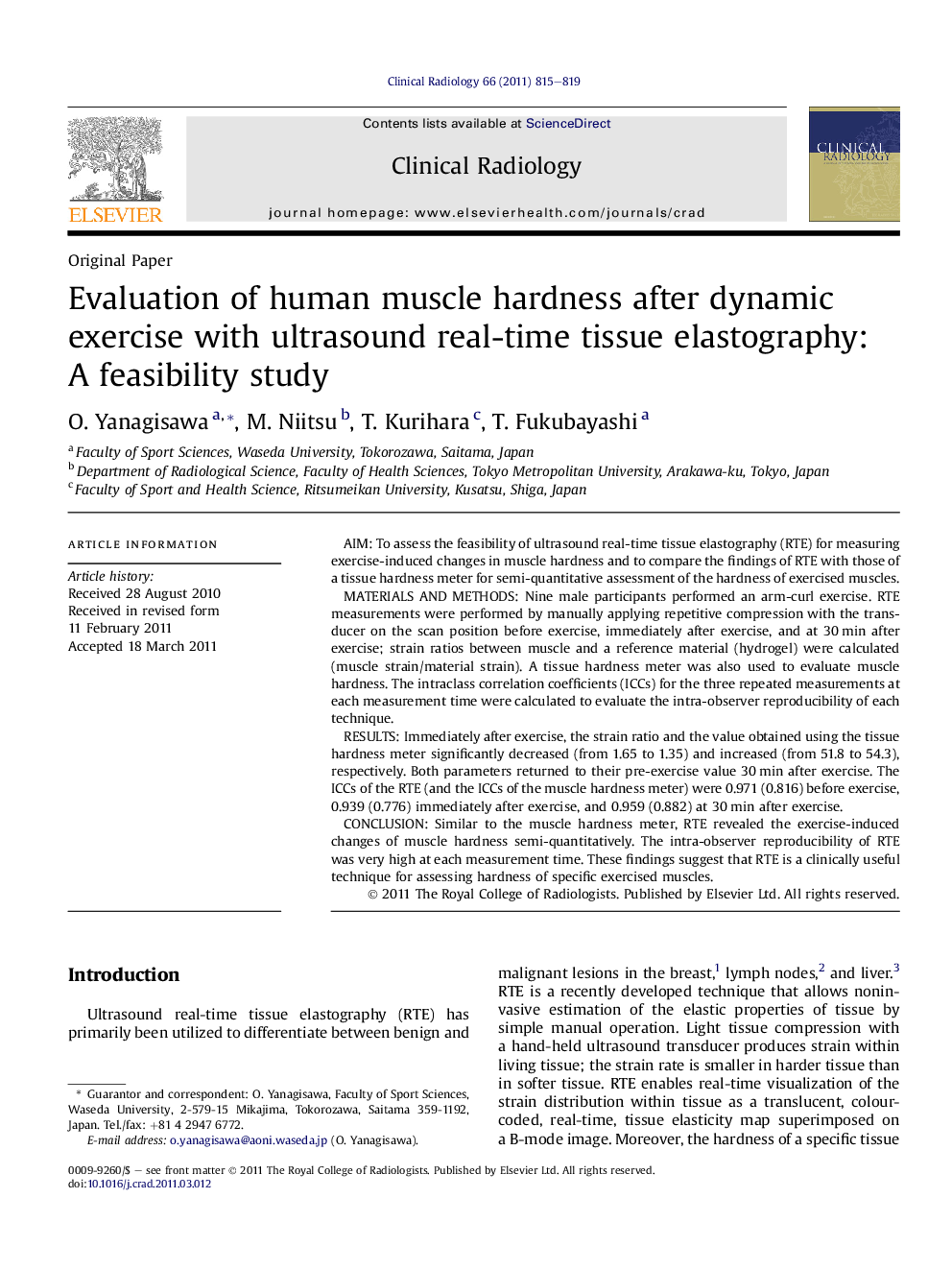| Article ID | Journal | Published Year | Pages | File Type |
|---|---|---|---|---|
| 3982508 | Clinical Radiology | 2011 | 5 Pages |
AimTo assess the feasibility of ultrasound real-time tissue elastography (RTE) for measuring exercise-induced changes in muscle hardness and to compare the findings of RTE with those of a tissue hardness meter for semi-quantitative assessment of the hardness of exercised muscles.Materials and methodsNine male participants performed an arm-curl exercise. RTE measurements were performed by manually applying repetitive compression with the transducer on the scan position before exercise, immediately after exercise, and at 30 min after exercise; strain ratios between muscle and a reference material (hydrogel) were calculated (muscle strain/material strain). A tissue hardness meter was also used to evaluate muscle hardness. The intraclass correlation coefficients (ICCs) for the three repeated measurements at each measurement time were calculated to evaluate the intra-observer reproducibility of each technique.ResultsImmediately after exercise, the strain ratio and the value obtained using the tissue hardness meter significantly decreased (from 1.65 to 1.35) and increased (from 51.8 to 54.3), respectively. Both parameters returned to their pre-exercise value 30 min after exercise. The ICCs of the RTE (and the ICCs of the muscle hardness meter) were 0.971 (0.816) before exercise, 0.939 (0.776) immediately after exercise, and 0.959 (0.882) at 30 min after exercise.ConclusionSimilar to the muscle hardness meter, RTE revealed the exercise-induced changes of muscle hardness semi-quantitatively. The intra-observer reproducibility of RTE was very high at each measurement time. These findings suggest that RTE is a clinically useful technique for assessing hardness of specific exercised muscles.
